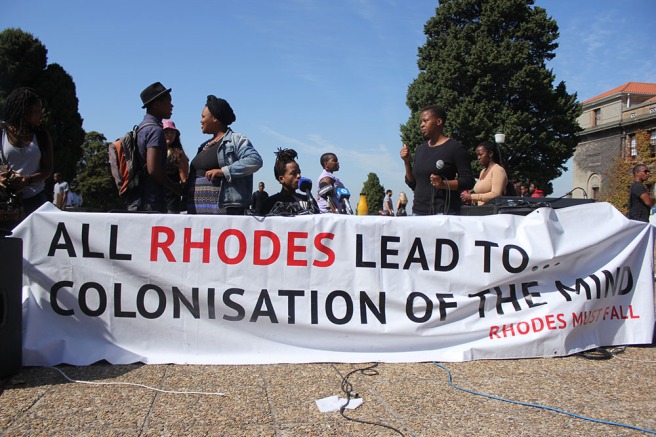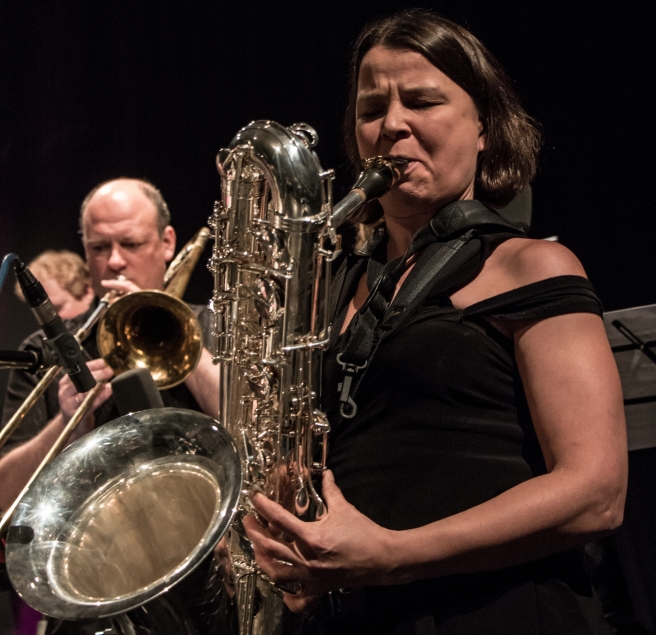Nationality, I wrote last week, is just a piece of paper. Identity is something far more intricate, involving the complex histories, perceptions and emotions that arise from membership of a social category, and how those histories, perceptions and emotions are expressed. That’s true whoever has defined the category – most nationalities in sub-Saharan Africa, for example, still stubbornly rest on divisions (“borders”) drawn by the old colonialists.
So, in the context of the current intense focus on ‘South African’ music, can we help bemused station controllers, producers, and compilers decide what is the genuine article even when the record label may not?
Three recordings have landed in my mail in the past month that begin to suggest answers. Wisdom of the Elders (brownwood recordings, https://shabakaandtheancestors.bandcamp.com/album/wisdom-of-elders ); Skyjack (https://soundcloud.com/skyjack-skyjack ); and McCoy Mrubata Live at the Bird’s Eye (https://www.cdbaby.com/cd/mccoymrubata1 ). The first comprises compositions by London-based tenorman Shabaka Hutchings; the band he leads, The Ancestors, comprises eight players born or resident here. Skyjack is a South African/Swiss collaboration: Cooper, pianist Kyle Shepherd and drummer Kesivan Naidoo plus saxophonist Marc Stucki and Andreas Tschopp on trombone. Mrubata is, of course, South African, but his 13 collaborators in trio, quintet and nonet are all Swiss-based.

Hutchings has become a regular visitor to South Africa, hooking up musically first with trumpeter Mandla Mlangeni and, through him with the other Ancestors: altoist Mthunzi Mvubu; pianist Nduduzo Makathini; bassist Ariel Zamonsky; drummer Tumi Mogorosi; and percussionist Gontse Makhene – plus, for this outing, vocalist Siya Mthembu, perhaps best known for work with TBMO. Hutchings’ connection with South African jazz goes back further, however; he talks of finding jazz inspiration in a copy of Bheki Mseleku’s Celebration, picked up initially on the strength of its (American) rhythm section names.
Long before even that, though, South Africa was actually helping to shape the modern jazz sound of London. The pioneers were Chris McGregor, Dudu Pukwana, Louis Moholo and the other Blue Notes. Others followed, including bassists Harry Miller and Ernest Motlhe, guitarist Lucky Ranku, percussionist Thebe Lepere, and later Mseleku and many more. Their influence on UK musicians such as Trevor Watts and Mike Westbrook and their bands (and audiences) was huge, and collaborations created a vocabulary and syntax that infused the whole modern British jazz scene. Later, along with the voices of many other elders from Coltrane and Ellington to the great Joe Harriot, Shake Keane and Rico Rodriguez, that language was breathed in and once more transformed by the new generation of Jazz Warriors, including Steve Williamson, Courtney Pine, Orphy Robinson and Gary Crosby. Their heirs include Jason Yarde, Soweto Kinch…and now Shabaka Hutchings. It’s not that any of these players necessarily sound like those who went before – or even like one another: they don’t. But there’s a lineage and a spirit there, and it matters.

So when I listen to Wisdom of the Elders, I hear London as well as South Africa, but a London that’s been BlueNoted, Brotherhooded, Speared and Warriored for so long that South Africa is part of its jazz DNA. (Before the Blue Notes, you never heard those joyous dissolves into free on London’s scene.) That history, as well as strong personal connections and human empathy in the now, is how Hutchings can write so beautifully for his South African collaborators. His compositions perfectly enfold the bluesy sonority and antiphony of Mthembu’s voice, the understated intricacy of Mogorosi’s drums, and the hymnal chords of Makathini’s piano. Mlangeni, his longest collaborator, plays trumpet with the contained energy of a tightly-wound spring; Hutchings’ writing and arrangement clears ample space for that energy to compress, uncoil and pop.
The compositions are also rich with other, older sounds of Africa. There are polyphonies and polyrhythms, sharp, urgent shouts and even some beautifully managed hocketing where, just as in tshikhona, a succession of single notes from individual players unwinds to create a complete, intriguing storyline. For me, the standout track is The Sea, but you’d be cheating yourself if you didn’t hear the whole album. And then go and see them live, because, like all great improvised music, it’ll be different next time.
 On the surface, Skyjack promises something very different, as the eponymous debut album from a smaller assembly of Swiss and South African modernists. The nine tracks include two each from Cooper, Shepherd, Stucki and Tschopp, plus Naidoo’s Freedom Dance as a closer. And jazz written or played by South Africans is South African jazz, whatever the context or content of the music. To deny that, is to retreat into the kind of crude essentialism that, for example, declared black clarinettist Don Byron’s jazz modernism “white” simply because it did not employ the conventional markers of African-American blues and swing.
On the surface, Skyjack promises something very different, as the eponymous debut album from a smaller assembly of Swiss and South African modernists. The nine tracks include two each from Cooper, Shepherd, Stucki and Tschopp, plus Naidoo’s Freedom Dance as a closer. And jazz written or played by South Africans is South African jazz, whatever the context or content of the music. To deny that, is to retreat into the kind of crude essentialism that, for example, declared black clarinettist Don Byron’s jazz modernism “white” simply because it did not employ the conventional markers of African-American blues and swing.
But in fact, there’s way more South African identity to this album than the nationality of three-fifths of the band. It’s upfront in Freedom Dance, a wonderfully clever weaving around an address by Nelson Mandela, where Naidoo’s fast, stormy drums not only make moving music, but capture and underline the cadence of the statesman’s speech and the patterns of his rhetoric. It’s less expected somewhere like Stucki’s waltz, Grandmère Dansant, where Shepherd’s straight outa Cape Town rolling left hand translocates the scene to a 1950s parlour in Kensington, before the rest of the band takes it travelling again. South Africa is present in the attack of Stucki’s sax, and in Tschopp’s trombone, irresistibly reminiscent of Radu Malfatti taking a solo in front of the chorusing Brotherhood of Breath horns. And it is jazz’s African lineage that gave us that set-up in the first place: a soloist stepping out from the line is the modern equivalent of the single voice rising out of the ring-shout, or the dancer winding in the centre of the ring.
Skyjack have been together since 2013, which explains the seamlessly empathetic sharing – and the way it works in both directions, because nobody plays the clichés of either South Africa or northern Europe. Their debut is a delight: by turns intense and thoughtful, and gently impressionistic (The Last Rainbow…) but always true to its heart.
 McCoy Mrubata’s Live @ The Bird’s Eye, is the one of these three albums most likely to be seized on with feverish relief by producers wanting some new South African jazz that fits the quotas. In fact, it has the lowest proportion of South African nationality: the compositions are 100% Mrubata, but the players are 97% based in Europe. Nobody who didn’t know that would guess it from the sound; that a warmly grooving Maleen Sutter on bass, or a growling Wolfgang Zumpe on euphonium hadn’t at least learned their playing, if not been born, here.
McCoy Mrubata’s Live @ The Bird’s Eye, is the one of these three albums most likely to be seized on with feverish relief by producers wanting some new South African jazz that fits the quotas. In fact, it has the lowest proportion of South African nationality: the compositions are 100% Mrubata, but the players are 97% based in Europe. Nobody who didn’t know that would guess it from the sound; that a warmly grooving Maleen Sutter on bass, or a growling Wolfgang Zumpe on euphonium hadn’t at least learned their playing, if not been born, here.
That’s not merely because South African jazz both draws on and contributes to an international language, but also because of the skill of Mrubata as composer and leader and, on a couple of numbers, that of his longtime trombone partner, Jabu Magubane, as arranger. The double album collects together 20 of Mrubata’s favourite compositions and gives him the chance to explore them in three different formats: trio, quintet and nonet.
Like all live albums, this one benefits from the atmosphere provided by a receptive, appreciative audience, as well as the pin-sharp recording quality the Bird’s Eye can offer. All the playing is tight and skillful, and Mrubata sounds better than ever (his flute playing on Philani is so sweet it’s positively edible).
So many points of contact with the other two albums shine through. That warm but tough reed attack that Dudu Pukwana carried to London is back at home – even in Basel – in Mrubata’s hands. The cyclical groove of Hutchings’ Nguni is the feel that underpins Mrubata’s Entlombeni. The sweet, poignant waltz-time of Grandmère Dansant finds a reprise of nostalgic mood in Mrubata’s Mr & Mrs Adonis.
If a definitive album for McCoy as composer and player – an individual musician, as opposed to his various ‘and friends’ ensembles – was needed, this is probably it. But it’s more than that. Like the others I’ve discussed, it’s a defiant two-fingers to genre purity and obsessive taxonomising, whether from apartheid ideologues or today’s quota-counting compilers. Jazz is a world music, and South Africans stand proudly among the greats who have made it so.











 But there’s clearly more, and more that’s intriguing, to Ubong’s music than just remembering Miles. Prayer might start on piano like So What?, but when the trumpet begins, the note sequence is distinctively Nigerian, not American, and it’s further in that African direction that Ubong’s intelligent improvisation takes it.
But there’s clearly more, and more that’s intriguing, to Ubong’s music than just remembering Miles. Prayer might start on piano like So What?, but when the trumpet begins, the note sequence is distinctively Nigerian, not American, and it’s further in that African direction that Ubong’s intelligent improvisation takes it.